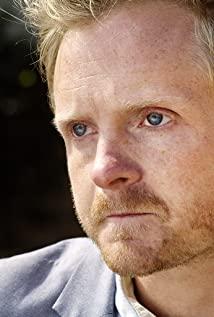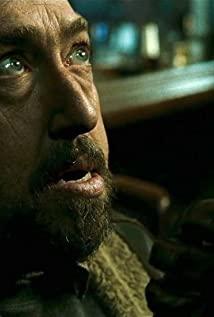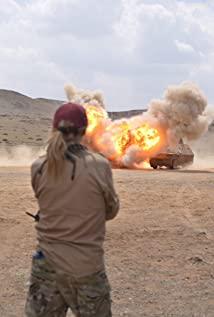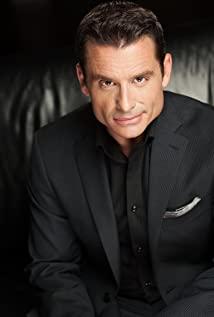Last month, Netflix announced its fourth quarter financial report for the 2017 fiscal year. In 2017, Netflix invested more than $6 billion in content, three times that of HBO. In 2018, Netflix is expected to continue to increase its investment in content to US$7 billion.
On February 2nd, "Altered Carbon" was aired, which was also a heavyweight sci-fi work with the largest investment and the longest momentum in Netflix's first quarter of the series.
At last month's CES, Netflix presented a very avant-garde exhibition for visitors to create momentum for "Copy".
It is said that the production cost of "The Copy" is higher than that of "The Crown", and the budget of one season is worth the sum of the budget of the previous three seasons of "Game of Thrones". Considering that the budget for each episode of the first few seasons of "Quanyou" is about 4.5-6 million US dollars, the total budget for the first three seasons is roughly 180 million US dollars, which means that the budget for the first season of "Copy" might be close to 200 million!
Netflix has always been obsessed with science fiction subjects, and "Copy" has become an eruption that has been gathering momentum for a long time. From the pilot episode, we can see how hard Netflix is this time: Laeta Kalogridis, the screenwriter of "Closed Island", wrote the script and served as the producer, and the director of "Game of Thrones" "Battle of Bastard" and Emmy Award winner Miguel Sapochnik directed the tube. The production is also a big cost. Judging from the first version of the trailer, the psychedelic sense of the future city and the strong cyberpunk style... all eyes are burning money.
But when the real money was smashed out, how could such an ethical drama dressed in science fiction be filmed?
Sai Peng on the left, ethics on the right, this is probably what the show wants to express.
"Duplicate" is adapted from the science fiction novel of the same name by Richard K. Morgan and tells the story of a curious cyberpunk detective.
In the 25th century, human consciousness can be stored separately from the body, and these digital consciousness can be freely uploaded and downloaded in the form of acupuncture to any "prosthetic body" on any planet.
The protagonist Takeshi Kovacs is a former star warrior who has been banned for 250 years after failing an uprising. In order to investigate the bizarre death of Bancroft, the world's richest man, Kovacs was released on bail early and his consciousness was transferred to the body of a policeman who was serving a sentence, Ryker. While investigating the cause of Bancroft's death, he gradually revealed the secrets of his life experience.
In the future world, consciousness can be transmitted in different bodies, thus realizing immortality.
For viewers who eat the setting, the setting of "The Copy" is amazing at first glance, and after careful chewing, it feels like a familiar feeling.
First of all, this dystopian setting of class differentiation in the context of cyberpunk is really a wife...too vulgar.
In the world of "Copy", behind the uncontrolled development of science and technology, the gap between the rich and the poor is still sharp.
The upper class (Meth) lived in the "sky area" above the clouds and almost never set foot in the slums to avoid getting infected with the deadly virus. They eat strange animals in Chinese clothes, and they are drunk and obsessed with life. They can purchase a variety of young, handsome and capable prostheses according to their needs, and even have satellites that can automatically upload DHF consciousness codes. If they want, they can live forever.
The rich live here, and the house price is 200,000 yuan per square meter.
Most people are struggling in the “stratum zone” on the surface because they are unable to rent suitable prostheses from the government. After their bodies are damaged, most people can only be forced to accept the old and broken free prostheses provided by the government. You can only let your consciousness float in the endless void, which is like "digital exile."
Rainy, neon...The street scene of the bottom society, with a strong flavor of Sai Peng.
It also provides customized services in accordance with customer needs, and uses "high-quality" bodies to continue life for customers. The whole setting can not help but recall the hottest "Escape from the Deadly Town" last year.
At first glance, I thought it was a poster for "Black Mirror".
At the beginning of the story of "Copy", the male protagonist's consciousness awakened in an unfamiliar (but advanced, even equipped with military neurochemistry and combat memory), and reluctantly accepted a task given to him by Meth: investigation The cause of his death.
During the investigation, Kovacs discovered that his previous life was a member of a resistance organization, and the leader of the organization, Quellcrist, was the one who invented the technology of transmission of consciousness. But while this technology has allowed people to extend their lifespan uncontrollably, it also made people lose their fear of death.
"The danger of too many lives is forgetting to fear death." In this way, the male lead was dragged onto the thief ship by the female leader.
So Quellcrist angrily led a group of like-minded people to resist the Interstellar Federal Government and the Meths.
...Anyway, you are reasonable.
Richard Morgan, the author of "Copy", once admitted that his views on the future are very pessimistic. He believes that human society is, in the past, and will certainly exist for the purpose of oppressing and exploiting the masses. Reflecting these three views in his works, it will inevitably show a distinctive dystopian color.
But at first glance, this kind of powerful, thinking about it carefully, I think it is obviously unreasonable, purely for dystopian and dystopian setting, from the very beginning, the main theme of the show is a bit out of tune.
In addition to the lack of novelty in the tone, the whole story has an embarrassing sense of familiarity from the big setting to the detailing .
In the setting of "Duplicate", a small group of privileged class can inject their consciousness into the new body indefinitely, thereby gaining immortality. And any rebellious behavior of the bottom race may lead to the destruction of consciousness and thus "real death."
Such a setting is not Roger Zelazny's "King of Light" ? The so-called "Meth" is not the "primordial ancestor"? Even the setting of "real death" is similar to "King of Light". (Extended reading: This work silenced George Martin and Neil Gaiman shed tears )
Not only did he openly "pay tribute" to Zelazny and "King of Light," the original author Richard K. Morgan seemed to be a fan of Philip K. Dick.
In addition to the recent hot cyberpunk settings, the plot of the black detective in "Dungeon", the background of alien colonization, artificial humans, memory transfer... Almost all-round "tribute" to "Total Memories" and "Blade Runner" .
This scene pays tribute to the composition of Deckard in "Blade Runner" walking up to the balcony to look at the street.
The content of society, celebrity effects, genetic modification, drug proliferation and so on under the autocratic rule is everywhere again. The sense of sight of "My Tears".
Specific to the characters, the long windbreaker of the protagonist Kovacs and the scars on his face are also reminiscent of Deckard in 2020 and K in 2049.
Sitting on the car in the rain, the neon light and shadow flow... the scene is extremely familiar.
Not to mention some irrelevant plot settings, but also align with PKD without exception.
Why does cyberpunk have to eat noodles at street stalls on rainy days? !
In addition, there are many places in "The Copy" that pay tribute to "Ghost in the Shell", "Dream of the Guns" and even Chandler.
The concept of replacing the prosthesis has appeared in both the animation and manga of "Ghost in the Shell".
It is precisely because of this that the amount of information in this drama is so complex that it is dazzling, including not only conscious uploads and downloads, but also religious views, proliferation of sex trafficking, illegal drug transactions on the black market, gang rushing, black police, cloning, and chemical abuse. After discussing many other issues, the elements are piled up and mixed with a strong sense.
To make matters worse, every two episodes of "Duplicate" will have a different director, and the level of difference of different directors also destroys the continuity of the series: the first two episodes are amazing in both the pictures and the narrative, starting from the third episode. The plot became muddy, and by the time the real BOSS appeared in episode 7, it seemed to be another story: the first 7 episodes were barely talking about it, and the last 3 episodes seemed to be rushing to get off work. Pushed out a line of Rei (sister) and quickly cut it off.
That is, from episode 7 onwards, the biggest problem was gradually exposed, and the whole story began to be in the middle of nowhere.
Although the first half of "The Copy" has many shortcomings, it is still a tough guy detective story in general, but it is placed under the shell of science fiction.
The temperament of the first half is like this still, tough and psychedelic.
Since Takeshi’s younger sister Rei went online, the show ran in an uncontrollable direction. The cyberpunk and dark detective atmosphere was violently impacted by this brother-controlled BOSS. The wind suddenly hits and the plot is also Began to sprinkle dog blood.
The seventh episode of the whole episode was completely filled with flashbacks of the male protagonist's memory.
Takeshi and his sister Rei were abused by their father when they were young, and even witnessed their father killing their mother and melting the corpse in the coolant pool. When his father tried to snatch the Ouroboros necklace his mother had left Rei, Takeshi exploded his father's leather plate in front of Rei.
Damage to the cortical disc means "real death", and the transmission of consciousness is no longer possible.
Perhaps it was this incident that caused a huge stimulus to Rei, which made her gradually become paranoid and possessive towards her brother. Out of jealousy, Rei killed his brother's lover, the leader of the rebel army, Quellcrist, and all the interstellar warriors. This action also directly led to the failure of the uprising and Takeshi was captured.
After awakening in the brand new prosthetic body, Takeshi and Rei met again and discovered the secret she had hidden for 250 years.
A pot of dog blood was splashed down.
The revealing of this truth is undoubtedly a heavy blow to the audience: originally thought that Bancroft's death would involve a major conspiracy involving the government, the interstellar, and even the whole of mankind, but it only led to the sister's abnormal love for her brother.
It can only be said that our socialism cannot understand your capitalist punk brother control.
During the entire 250 years when his brother was banned, Rei, who was completely blackened, went around looking for opportunities to rescue his brother while accumulating his own power. In her words, she built an empire that could cover the entire colonial world: not only did she have a high-tech laboratory dedicated to torture, she even found a way to forge religious codes. All the Bancrofts in the sky are regarded as chess pieces by her.
Such a ruthless character died so hastily in the end, this kind of treatment is really unacceptable.
If you learn this ruthless sentence, you will always be able to use it.
Not only did my sister die in a hurry, but the supporting characters (whether they succeeded or failed) so painstakingly shaped in front of them, their experiences and moods were basically passed on at the end of the first season, and they never tried to fill in the details.
The most attractive image created in the first half: Meng Meng Da Hotel AI: Poe.
By this time, the story seemed to have reached a fork in the road, and there was very little Sai Peng temperament left.
Not to mention that in addition to this, there are many dumbfounding and hot-blooded second plots, like the male lead pretending to be ruthless and ruthless to drive away all the relatives and friends, but actually want to single out the dark forces of his sister, including the Elliot and his wife. The little friends including Mickey said in a righteous manner: Don't make your own claim, we will not let you die alone.
Then it was almost destroyed by the group.
Netflix probably owed the screenwriter's salary to produce this kind of plot that is incompatible with the style of the whole work.
Behind the collapse of the plot and temperament, the paleness of the inner core is also a big slot in "The Copy".
When the first episode came up, we used social issues such as medical insurance contradiction between the rich and the poor to blur the audience’s face. But the gap between the rich and the poor will never be eliminated." This old-fashioned but always talkable topic.
The 7-year-old girl was damaged in a car accident because she was unable to purchase an age-appropriate prosthesis, and her consciousness could only be attached to an old woman's body.
When Goya's paintings appeared several times, we thought that the show would eventually talk about creation, humanity, divinity and humanity-just like "Prometheus."
But at the end we discovered that the gorgeous cyberpunk aesthetics only serve the traditional and empty chasing routines. The sci-fi core perfectly evades the individual consciousness and meaning of life ("Blade Runner") and the autonomy of the population. The eternal proposition of sci-fi ("Blade Runner 2049") is only a superficial stay in the duality of body and soul and human lifespan. The focus of the whole drama sinks to the point of "my sister can't be so cute". noodle.
Compare the movie history of "Blade Runner".
So far, this drama has been completely reduced to an ethical drama with a gimmick and a strong sense of form, but lacks speculation and the plot is chaotic.
But in the final analysis, the pot is the original pot.
In the play, everything that involves visualization is not black, the atmosphere of Sai Peng is in place, the details are excellent, especially the access to the eggs such as the tail dragon, the infinite symbol, and the Day of the Dead is very smooth. The AI hotel and the AI union are fascinating. .
This image, name, and even this "crow hotel"-no problem, this is the famous American detective novelist Edgar Allan Poe.
At the same time, the various large-scale scenes in the play are also rare for Netflix before, and the ambition to use this play against HBO is evident.
Because of rate R, the show is very generous in terms of scale, and the male protagonist often offers service shots.
However, the accumulation of elements, the plot is terrible, the core is missing, and too many flashbacks have caused the plot to be fragmented, which has become the original sin of "The Copy". Too much adherence to family ethics led to the end of the story not being cyberpunk, and the effort to invest 100 million US dollars on CGI was in vain.
Thanks to Joel Kinnaman, the actor of the male lead, and his always-on appearance and body, which saved the watchability of this show to a certain extent. Regrettably, with the final male protagonist Takeshi Kovacs giving up this prosthetic body in the first season, we may not see this handsome Nordic guy in the second season that has been renewed.
The real handsome, even if he is carrying a pink unicorn bag on his back, he is both competitive and friendly, all kinds of decadent beauty.
In view of the extreme high driving and low driving of the show, we might as well regard the first few episodes of "Copy" as the first part of a certain science fiction series. After all, Netflix's psychedelic game-friends temperament that Netflix has made a huge pile of money is shown to the fullest in the first half of this season.
So if you are not a patient with severe plot obsessive-compulsive disorder, then "The Copy" (the first half of the season) is not to be missed.
View more about Altered Carbon reviews











